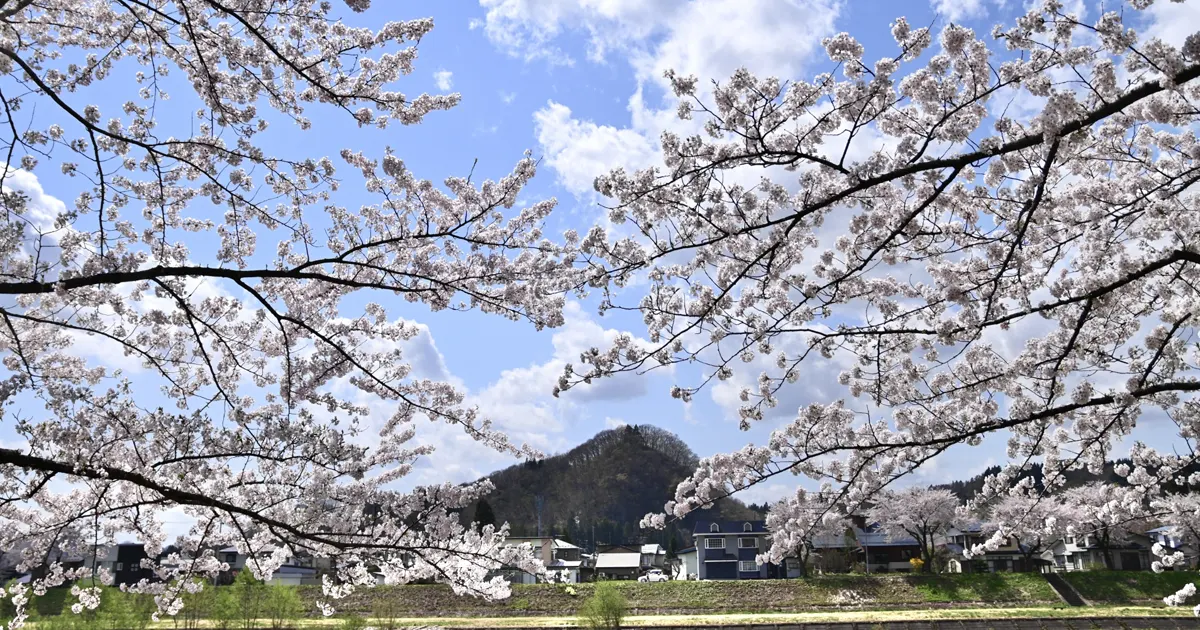A town of serene beauty where samurai residences and weeping cherry trees coexist—that is Kakunodate, in Akita Prefecture. Historic streets from the Edo period remain intact, and in spring, the blooming sakura quietly embrace visitors with their soft petals.
This article offers easy-to-understand travel tips and Q&A about sightseeing in Kakunodate, especially tailored for first-time visitors to Japan and solo travelers. You’ll find information on how to get there, what to see, and how to ease any small travel worries.
We hope this guide helps you enjoy a meaningful and comfortable journey to Kakunodate, filled with memorable experiences.
Contents
How to Get to Kakunodate by Train
Check the latest weather forecast before your visit: [weathernews ]
By Train
Tokyo Station
Take the Tohoku Shinkansen “Yamabiko” to Morioka Station (approx. 2 hr 20 min)
Transfer to the Akita Shinkansen “Komachi” and ride to Kakunodate Station (approx. 50 min)
Walk about 15 minutes from Kakunodate Station to the samurai district
Total travel time: approx. 3 hr 30 min
Akita Station
Take the Ou Main Line (local train) to Kakunodate Station (approx. 1 hr 10 min)
Walk about 15 minutes from Kakunodate Station to the samurai district
Total travel time: approx. 1 hr 30 min
Sendai Station
Take the Tohoku Shinkansen “Hayabusa” to Morioka Station (approx. 50 min)
Transfer to the Akita Shinkansen “Komachi” and ride to Kakunodate Station (approx. 50 min)
Walk about 15 minutes from Kakunodate Station to the samurai district
Total travel time: approx. 1 hr 50 min
One Point Advice
Hours, Admission & Facility Info
Top Sights in Kakunodate for a Half-Day Trip
Bukeyashiki Street|Samurai Homes and History
As you walk along this quiet street lined with black wooden fences, it feels like you’ve stepped back in time. Kakunodate’s samurai district still preserves many authentic Edo-period homes, and several, like the Aoyagi and Ishiguro residences, are open to visitors. Inside, you can explore samurai armor , household items, and cultural artifacts. Guided tours are available. In spring, weeping cherry blossoms bloom gently over the fences, creating a painterly scene.
Duration: 60–90 min
Admission: Some homes charge entry (e.g., Aoyagi-ke: 500 yen for adults)
Hinokinai Riverbank|Weeping Sakura Tunnel
This riverside path is within walking distance from Kakunodate Station and stretches about 2 km with weeping cherry trees . In spring, the canopy of blossoms creates a tunnel where petals softly fall as you walk. Some evenings feature cherry blossom illuminations, and the trees reflect beautifully on the water. It’s a lovely walk in all seasons, not just spring.
Duration: 30–40 min
Admission: Free
Shinchosha Literary Museum|Explore Japanese Writers
This museum displays works by authors such as Saneatsu Mushanokoji and Naoya Shiga , alongside manuscripts and first editions related to Shinchosha Publishing. It’s housed in a historically rich building, offering a peaceful environment—ideal for those who seek quiet moments away from the crowds. English-language signage is available, making it a hidden gem for foreign and international visitors.
Duration: 20–30 min
Admission: 300 yen for adults
More Things to Do Around Kakunodate
Kabazaiku Craft Museum|Cherry Bark Handicrafts
This museum showcases Kakunodate’s traditional craft , kabazaiku—artworks made from cherry bark . Located about a 10-minute walk from Kakunodate Station, it features beautiful exhibits and live demonstrations by skilled artisans. Visitors can also purchase handcrafted goods, making it a great spot for souvenirs and cultural appreciation.
Dakigaeri Gorge|Nature Trails and Scenic Views
Take the Akita Nairiku Line from Kakunodate Station to Jindai Station (approx. 15 min), then transfer to a bus for about 10 min. Especially stunning in spring and autumn, this scenic gorge features turquoise river waters and vibrant seasonal foliage. The suspension bridge and well-maintained trails make it perfect for a 30–60 min light hike—a refreshing contrast to town sightseeing.
Lake Tazawa|Japan’s Deepest Blue Lake
From Kakunodate, take the JR Tazawako Line to Tazawako Station (approx. 20 min), then a bus to the lake shore (approx. 15 min). Lake Tazawa’s deep blue waters are breathtaking and often searched by travelers seeking hidden nature spots in Japan. Attractions include the Tatsuko statue, boat rides, footbaths, and nearby hot springs—perfect for a peaceful day surrounded by nature.
Kakunodate Travel Questions & Answers
When is the best time to see cherry blossoms in Kakunodate?
Mid to late April is ideal, with full bloom typically around April 20.
Are there places to enjoy even on rainy days?
Yes, museums and cafés in the samurai district offer cozy indoor experiences.
Is Kakunodate suitable for solo travelers?
Absolutely. Signs are easy to follow, and the area is very walkable.
Are there public restrooms and places to take a break?
Multiple public toilets and rest areas are available, making it friendly for women too.
What should I wear if visiting in spring?
A light jacket is recommended, as mornings and evenings can be chilly.
Kakunodate Summary & Next Travel Ideas
Kakunodate is a place where historic charm and seasonal beauty come together. Its cherry trees and samurai houses offer quiet, memorable moments.
With easy access and a relaxed pace, it’s perfect for first-time visitors and solo travelers alike. You can immerse yourself in nature and culture without stress.
Next, why not head to Lake Tazawa—where tranquil waters and warm hot springs await?

